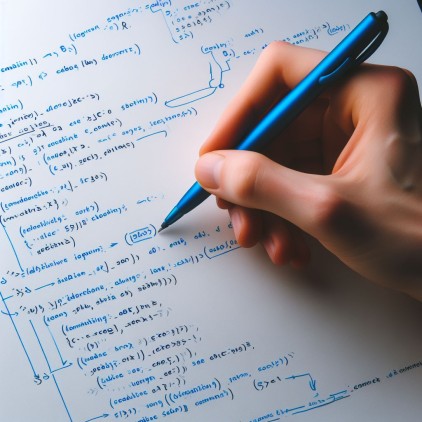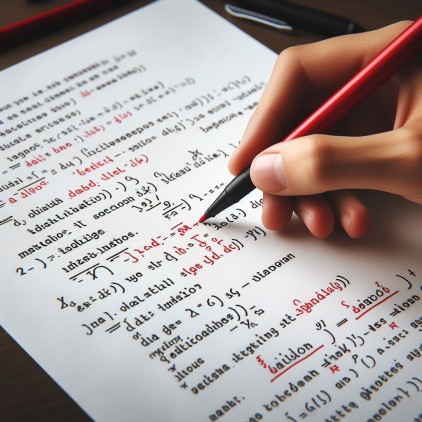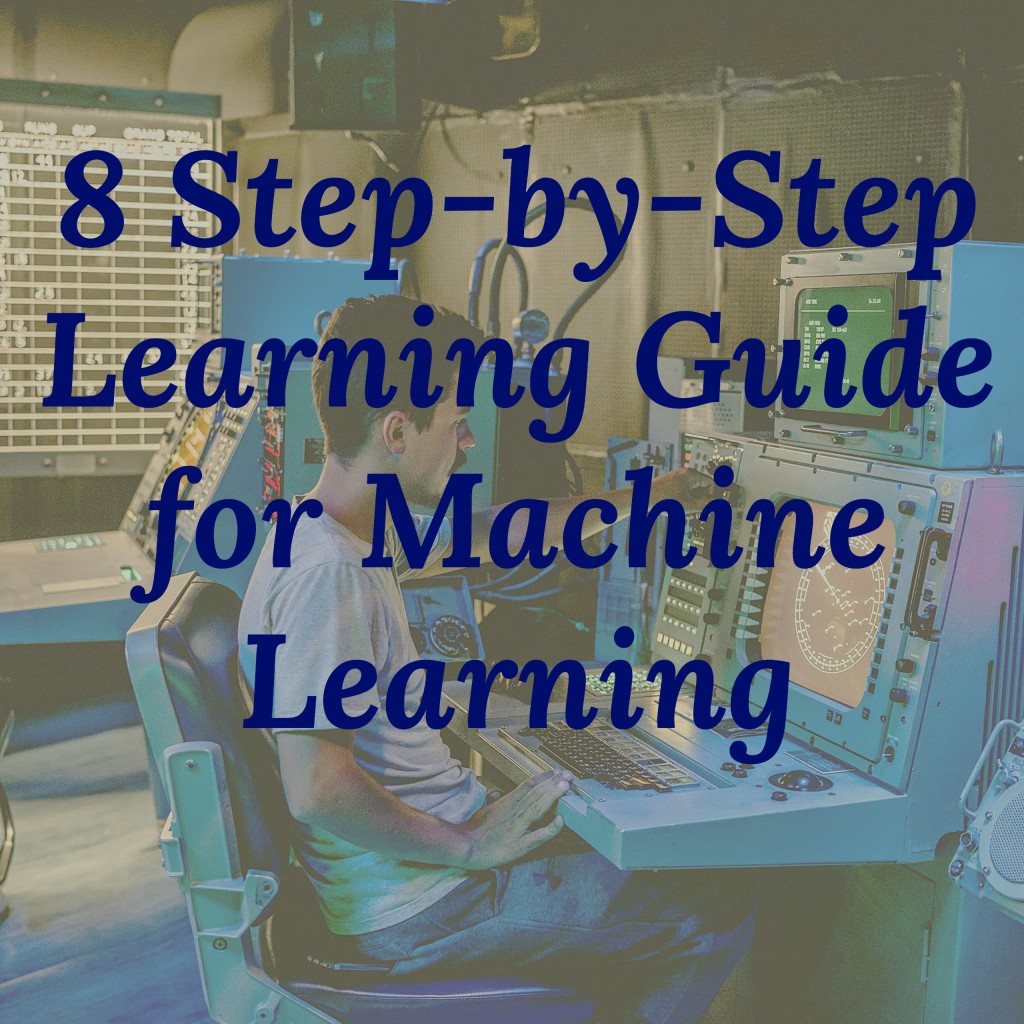If you want to learn Machine Learning from scratch, you need to follow a systematic process that covers the essential topics and skills. Going through these eight steps will help you master ML and apply it to real-world problems.
Step 1: Regression Algorithms

Regression is a form of supervised learning, that seeks to forecast a continuous output variable by leveraging one or more input variables. Regression algorithms play a crucial role in tasks like forecasting, trend analysis, and optimization.
Some commonly used regression methods include:
– Linear Regression: A simple and powerful algorithm that assumes a linear relationship between the input and output variables. It can be used for both simple and multiple regression, depending on the number of input variables.
– Polynomial Regression: A generalization of linear regression that allows for non-linear relationships by adding polynomial terms to the model. It can capture more complex patterns in the data, but it can also suffer from overfitting if the degree of the polynomial is too high.
– Ridge Regression: A variation of linear regression that adds a regularization term to the cost function, which penalizes large coefficients. It can reduce overfitting and improve generalization, especially when the input variables are correlated.
– Lasso Regression: Another variation of linear regression that also adds a regularization term, but in this case, it penalizes the absolute value of the coefficients. It can also reduce overfitting and improve generalization, but it has the additional advantage of performing feature selection by shrinking irrelevant coefficients to zero.
– Elastic Net Regression: A combination of ridge and lasso regression that uses a weighted sum of the two regularization terms. It can balance the trade-off between bias and variance, and it can handle both correlated and sparse features.
Step 2: Linear Classification Algorithms

Classification is another type of supervised learning that aims to predict a discrete output variable based on one or more input variables. Classification algorithms are widely used for tasks such as spam detection, face recognition, and sentiment analysis.
Some of the most common linear classification algorithms are:
– Logistic Regression: A simple and powerful algorithm that models the probability of a binary outcome using a logistic function. It can be extended to handle multi-class problems using techniques such as one-vs-all or softmax.
– Linear Discriminant Analysis: A dimensionality reduction technique that projects the input variables onto a lower-dimensional space that maximizes the separation between the classes. It can also be used as a classifier by assigning the input to the class with the highest posterior probability.
– Stochastic Gradient Descent Classifier: A scalable and efficient algorithm that iteratively updates the model parameters using a random subset of the data at each step. It can handle large and sparse datasets, and it can be applied to various linear models, such as logistic regression or SVM.
Step 3: Naive Bayes Algorithms
Naive Bayes is a type of probabilistic learning that applies Bayes’ theorem to make predictions based on prior knowledge and evidence. Naive Bayes algorithms are simple and fast, and they can handle noisy and incomplete data. However, they also make a strong assumption that the input variables are conditionally independent given the output variable, which may not hold in reality.
Some of the most common naive Bayes algorithms are:
– Gaussian Naive Bayes: A naive Bayes algorithm that assumes that the input variables follow a Gaussian (normal) distribution. It can be used for continuous or discrete input variables, and it can handle mixed types of data by using different distributions for different variables.
– Multinomial Naive Bayes: A naive Bayes algorithm that assumes that the input variables follow a multinomial distribution. It can be used for discrete input variables, such as word counts or frequencies, and it is suitable for text classification tasks, such as spam detection or sentiment analysis.
– Bernoulli Naive Bayes: A naive Bayes algorithm that assumes that the input variables follow a Bernoulli distribution. It can be used for binary input variables, such as presence or absence of features, and it is also suitable for text classification tasks, especially when the data is sparse.
Step 4: SVM and KNN Algorithms
The next step should be learning Support Vector Machines and K Nearest Neighbors for classification and regression. SVM and KNN are two powerful and versatile algorithms that can handle linear and non-linear problems, and they can achieve high accuracy and robustness.
Some of the main features of SVM and KNN algorithms are:
– Support Vector Machines: A margin-based algorithm that finds the optimal hyperplane that separates the data into two classes. It can handle non-linear problems by using kernel functions that map the data into a higher-dimensional space. It can also handle multi-class problems by using techniques such as one-vs-all or one-vs-one.
– K Nearest Neighbors: A distance-based algorithm that assigns the data to the class of the majority of its k nearest neighbors. It can handle non-linear problems by using different distance metrics, such as Euclidean, Manhattan, or Minkowski. It can also handle multi-class problems by using different voting schemes, such as majority, weighted, or distance-based.
Step 5: Decision Trees and Ensemble Methods
Decision trees are a type of graphical learning that uses a tree-like structure to represent the rules and outcomes of a decision process. Decision trees are easy to interpret and explain, and they can handle various types of data, such as categorical, numerical, or mixed. However, they can also suffer from overfitting, instability, and bias.
Ensemble methods are a type of meta-learning that combines multiple base learners into a composite learner that can achieve better results than any individual learner. Ensemble methods can improve the accuracy, stability, and diversity of the predictions, and they can also reduce the variance, bias, and overfitting of the base learners.
Some of the most common decision trees and ensemble methods are:
– CART: A popular algorithm that builds binary decision trees by recursively splitting the data based on the feature that minimizes the impurity of the resulting subsets. It can handle both classification and regression problems, and it can also handle missing values and pruning techniques.
– ID3: A simple and intuitive algorithm that builds decision trees by recursively splitting the data based on the feature that maximizes the information gain of the resulting subsets. It can handle only classification problems, and it can also handle categorical features and entropy measures.
– C4.5: An extension of ID3 that improves its performance by using gain ratio instead of information gain, and by adding post-pruning and continuous feature handling techniques. It can handle both classification and regression problems, and it can also handle missing values and rule extraction.
– Random Forests: A powerful and robust ensemble method that builds multiple decision trees using bootstrap samples of the data and random subsets of the features. It can handle both classification and regression problems, and it can also handle large and high-dimensional datasets, missing values, and feature importance.
– Bagging: A simple and effective ensemble method that builds multiple base learners using bootstrap samples of the data, and averages their predictions. It can reduce the variance and overfitting of the base learners, and it can also handle various types of base learners, such as decision trees, SVM, or KNN.
– Stacking: A sophisticated and flexible ensemble method that builds multiple base learners using the original data, and trains a meta-learner using their predictions as inputs. It can reduce the bias and overfitting of the base learners, and it can also handle various types of base learners and meta-learners, such as linear regression, logistic regression, or neural networks.
Step 6: Boosting Algorithms
Boosting is a type of ensemble learning that combines multiple weak learners into a strong learner by iteratively adding new learners that correct the errors of the previous ones. Boosting algorithms are widely used for tasks such as classification, regression, and ranking, and they can achieve high accuracy and performance.
Boosting algorithms that are frequently used include:
– Gradient Boosting: A general and flexible algorithm that uses gradient descent to optimize a loss function that measures the difference between the predictions and the true values. It can handle various types of data, loss functions, and base learners, and it can also incorporate regularization and subsampling techniques to prevent overfitting.
– Adaboost: A simple and intuitive algorithm that assigns weights to the data points based on their difficulty, and updates the weights after each iteration. It can handle binary and multi-class problems, and it can use any base learner that can produce a weak hypothesis, such as decision trees or SVM.
– XGBoost: A scalable and optimized algorithm that implements gradient boosting with several enhancements, such as parallelization, tree pruning, regularization, and missing value handling. It can handle large and high-dimensional datasets, and it can also provide feature importance and model visualization.
Step 7: Clustering Algorithms
The goal of clustering, a kind of unsupervised learning, is to assign data points to groups that are similar or close to each other according to some criteria. Clustering algorithms have many applications, such as finding patterns in data, dividing customers into segments, detecting outliers, and making recommendations.
Some examples of popular clustering algorithms are:
– K-means Clustering: A simple and popular algorithm that partitions the data into k clusters based on the Euclidean distance to the cluster centroids. It can handle large and spherical datasets, but it requires specifying the number of clusters in advance, and it is sensitive to outliers and initialization.
– DBSCAN: A density-based algorithm that identifies clusters based on the density of data points in a neighborhood. It can handle arbitrary-shaped and noisy datasets, and it does not require specifying the number of clusters, but it requires specifying two parameters: the neighborhood radius and the minimum number of points in a cluster.
– Agglomerative Clustering: A hierarchical algorithm that builds a tree of clusters by merging the most similar pairs of data points or clusters at each step. It can handle any distance metric and linkage criterion, and it provides a visual representation of the clustering process, but it is computationally expensive and sensitive to outliers.
– BIRCH Clustering: A scalable and memory-efficient algorithm that builds a tree of clusters by summarizing the data points into subclusters. It can handle large and high-dimensional datasets, and it can reduce the complexity of subsequent clustering algorithms, but it requires specifying the number of clusters and the size of the subclusters.
– Mean Shift Clustering: A centroid-based algorithm that shifts the data points towards the regions of higher density. It can handle arbitrary-shaped and noisy datasets, and it does not require specifying the number of clusters, but it requires specifying the bandwidth of the kernel function.
Step 8: Neural Network Architectures
Neural networks are a type of deep learning that mimics the structure and function of the human brain. Neural networks consist of layers of interconnected nodes that process and transmit information. Neural networks can learn complex and non-linear patterns in the data, and they can achieve state-of-the-art results on various tasks, such as image recognition, natural language processing, and generative modeling.
Some of the most common neural network architectures are:
– Convolutional Neural Networks: A specialized type of neural network that uses convolutional layers to extract features from images. CNNs can handle high-dimensional and spatially correlated data, and they can reduce the number of parameters and computations by using shared weights and pooling layers.
– Recurrent Neural Networks: A specialized type of neural network that uses recurrent layers to capture temporal dependencies in sequential data. RNNs can handle variable-length and ordered data, such as text, speech, or video, and they can model long-term dependencies by using memory cells and gates.
– Long Short-Term Memory: A variant of RNN that uses a more complex recurrent unit that consists of an input gate, an output gate, a forget gate, and a cell state. LSTM can overcome the problem of vanishing or exploding gradients that affects RNNs, and it can learn long-term dependencies more effectively.
– Generative Adversarial Networks: A novel type of neural network that consists of two competing networks: a generator and a discriminator. The generator tries to produce realistic samples from a latent space, while the discriminator tries to distinguish between real and fake samples. GANs can generate high-quality and diverse images, text, or audio, and they can also be used for tasks such as data augmentation, style transfer, or anomaly detection.
– Perceptron: The simplest type of neural network that consists of a single layer of nodes that perform a linear transformation followed by a non-linear activation function. The perceptron can learn linearly separable patterns, and it can be used as a building block for more complex neural networks.
– Multilayer Perceptron: A generalization of the perceptron that consists of multiple layers of nodes that perform successive linear transformations and non-linear activations. The MLP can learn non-linearly separable patterns, and it can be used for various tasks, such as classification, regression, or dimensionality reduction.
– Transformer Networks: A recent type of neural network that uses attention mechanisms to capture global dependencies in sequential data. Transformer networks can handle variable-length and unordered data, such as text, speech, or images, and they can achieve state-of-the-art results on natural language processing tasks, such as machine translation, text summarization, or question answering.



